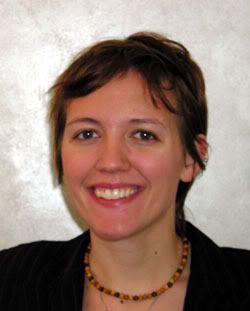 I have spent a fair amount of time in Phoenix and never considered it a green, environmentally friendly city. The city, located in Sonoran Desert, far from its main water source, the Colorado River, sprawls 517 square miles and has a population of more than 1.5 million, ranking it the fifth largest city in the country and the largest capital city in terms of population. All of those people in all of that space use a lot of water and a lot of energy, particularly since average high temperatures top 100 degrees during the summer. And sure, it’s a dry heat, but I attended my sister’s college graduation from Arizona State University one May, and the temperature hit 115. I’ll tell you, once it’s over 100, dry heat or not, it’s just hot. Air conditioners hum to make buildings comfortable, sprinklers work to keep nonnative plants alive, and misters spray cool water mist onto shoppers in outdoor malls. Phoenix seemed to me to be an unsustainable city. And then I went to Greenbuild and learned quite the opposite.
I have spent a fair amount of time in Phoenix and never considered it a green, environmentally friendly city. The city, located in Sonoran Desert, far from its main water source, the Colorado River, sprawls 517 square miles and has a population of more than 1.5 million, ranking it the fifth largest city in the country and the largest capital city in terms of population. All of those people in all of that space use a lot of water and a lot of energy, particularly since average high temperatures top 100 degrees during the summer. And sure, it’s a dry heat, but I attended my sister’s college graduation from Arizona State University one May, and the temperature hit 115. I’ll tell you, once it’s over 100, dry heat or not, it’s just hot. Air conditioners hum to make buildings comfortable, sprinklers work to keep nonnative plants alive, and misters spray cool water mist onto shoppers in outdoor malls. Phoenix seemed to me to be an unsustainable city. And then I went to Greenbuild and learned quite the opposite. The City of Phoenix hosted the 2009 Greenbuild International Conference and Expo, Nov. 11-13 in its Silver Leadership in Energy and Environmental Design certified convention center. View a photo gallery of the convention center. The day-lit and glass-heavy convention center that features solar panels and sits just blocks away from the Valley Metro light rail is a perfect representation of the efforts Phoenix has taken to become an environmentally friendly and sustainable city.
The City of Phoenix hosted the 2009 Greenbuild International Conference and Expo, Nov. 11-13 in its Silver Leadership in Energy and Environmental Design certified convention center. View a photo gallery of the convention center. The day-lit and glass-heavy convention center that features solar panels and sits just blocks away from the Valley Metro light rail is a perfect representation of the efforts Phoenix has taken to become an environmentally friendly and sustainable city."Greenbuild didn't come to Arizona by accident," Beth Vershure, executive director of the Greenbuild Arizona Host Committee, said in the Official Greenbuild 2009 Blog, according to a Nov. 13 U.S. Green Building Council release. "A strong USGBC chapter, the Valley's new light rail system, Phoenix's LEED Silver convention center addition and USGBC's recognition of Arizona's growing commitment to sustainability all factored into this decision."
According to a Nov. 7 Arizona Republic blog posting, Phoenix’s water usage has sustained the same level as a decade ago, despite the city’s population growth. Additionally, the city is beginning its 30th year of its comprehensive recycling program.
In March, the city government enacted the Green Phoenix strategy to make Phoenix “carbon-neutral and the most sustainable city in America,” said Mayor Phil Gordon in his letter for the convention catalog. “The Green Phoenix initiative … is a comprehensive, collaborative effort designed to leverage the Federal government’s emphasis on job creation, energy efficiency and economic recovery.”
If fully implemented, the three- to four-year plan would cut the city’s greenhouse gas emissions by 70 percent, equal to taking 80,000 vehicles off the road, according to a March 11 article from the Arizona Republic. The plan also includes building a solar power plant on 1,200 acres at the city’s landfill in Buckeye, Ariz., and transforming Phoenix into a “solar city” by installing solar panels and solar water heaters in existing buildings and requiring them for all new facilities. Home and business owners would also receive incentives for solar panels and weatherization, according to the article.
Is Phoenix green? You bet.
--By Katy Devlin, commercial glass & metals editor


1 comment:
You still shouldn't believe Phoenix is Green city. Mayor Gordon's idea of green is money saved, nothing else. tonight he voted to allow a rezoning that will do some nasty light pollution to Thunderbird Conservation Park. But it's across the street in Glendale, so Phoenix is still green. It takes more than talk - it takes real care for the environemnt to preserve what exists - to make a Mayor green.
Post a Comment